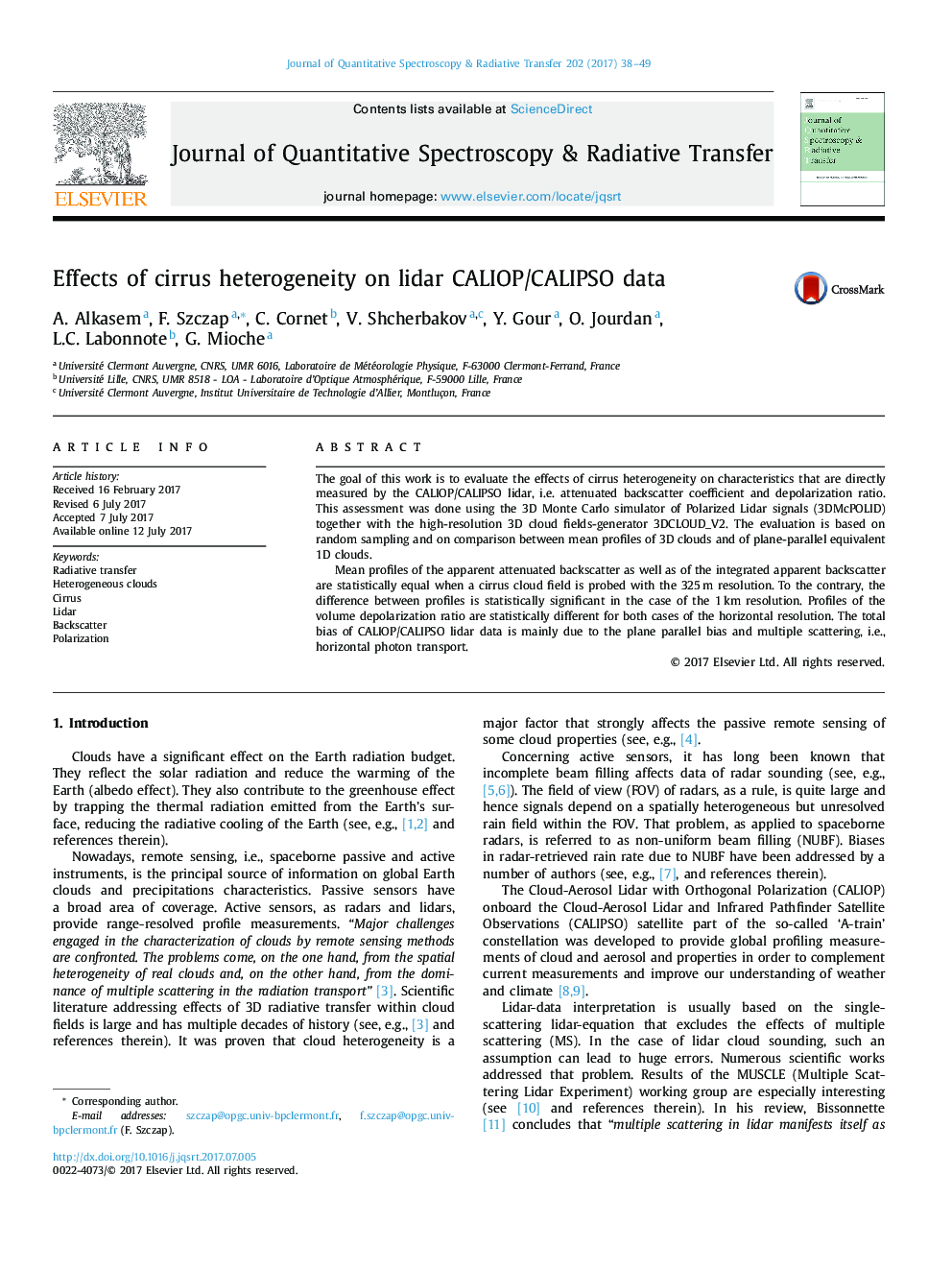| Article ID | Journal | Published Year | Pages | File Type |
|---|---|---|---|---|
| 5426970 | Journal of Quantitative Spectroscopy and Radiative Transfer | 2017 | 12 Pages |
â¢Heterogeneous cirrus clouds are generated.â¢Lidar signals are simulated using a Monte-Carlo code.â¢Effects on CALIOP lidar measured data are evaluated.â¢Importance of horizontal photon transport is underscored.
The goal of this work is to evaluate the effects of cirrus heterogeneity on characteristics that are directly measured by the CALIOP/CALIPSO lidar, i.e. attenuated backscatter coefficient and depolarization ratio. This assessment was done using the 3D Monte Carlo simulator of Polarized Lidar signals (3DMcPOLID) together with the high-resolution 3D cloud fields-generator 3DCLOUD_V2. The evaluation is based on random sampling and on comparison between mean profiles of 3D clouds and of plane-parallel equivalent 1D clouds.Mean profiles of the apparent attenuated backscatter as well as of the integrated apparent backscatter are statistically equal when a cirrus cloud field is probed with the 325â¯m resolution. To the contrary, the difference between profiles is statistically significant in the case of the 1â¯km resolution. Profiles of the volume depolarization ratio are statistically different for both cases of the horizontal resolution. The total bias of CALIOP/CALIPSO lidar data is mainly due to the plane parallel bias and multiple scattering, i.e., horizontal photon transport.
